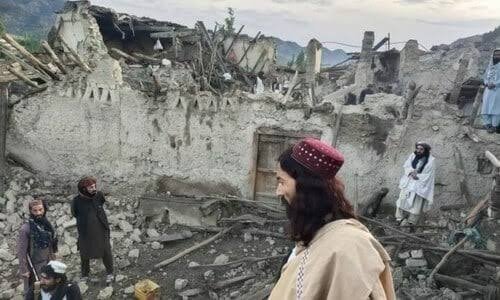Deadly earthquake strikes western Afghanistan, leaving dozens dead, many injured

In a race against time, Afghan rescuers worked tirelessly through the night following a devastating earthquake that struck western Afghanistan. The earthquake, measuring a magnitude of 6.3 on the Richter scale, struck on Saturday and was followed by eight powerful aftershocks, causing widespread destruction in the region.
The epicenter of the quake was located 30 kilometers (19 miles) northwest of Herat, the provincial capital. The initial shockwave and subsequent aftershocks led to the collapse of numerous rural homes and sent panic-stricken city dwellers rushing into the streets.
According to Mosa Ashari, head of Herat’s disaster management, the initial reported death toll stands at approximately 120, with more than 1,000 individuals, including women, children, and the elderly, reported as injured. Authorities fear that the death toll will continue to rise as the full extent of the disaster unfolds.
Sarboland village in Zinda Jan district, near the epicenter, witnessed the devastating impact of the earthquake, with dozens of homes reduced to rubble. Men worked diligently to clear the debris while women and children sought refuge in the open, their homes now reduced to ruins.
The World Health Organization (WHO) reported that over 600 houses were either destroyed or partially damaged across at least 12 villages in Herat province, affecting around 4,200 people. Survivors recounted the terrifying moment when the earthquake struck, leaving many trapped under collapsed structures.
Nek Mohammad, who was at work when the quake hit, described returning home to find “everything had turned to sand.” He noted the grim discovery of around 30 bodies, emphasizing the desperate need for aid and shelter for those affected.
The WHO expressed concerns that the casualty count could rise further as search and rescue operations continued.
While Herat city itself experienced residents fleeing their homes and evacuations of schools, hospitals, and offices, reports of casualties in the metropolitan area remained relatively low.
Afghanistan, already grappling with a dire humanitarian crisis, has been hit hard by the withdrawal of foreign aid following the Taliban’s resurgence in 2021. Herat province, with a population of approximately 1.9 million near the Iranian border, has additionally faced years of drought, compounding the challenges faced by its communities.
Afghanistan is no stranger to earthquakes, particularly in the Hindu Kush mountain range, situated at the convergence of the Eurasian and Indian tectonic plates. Last year, a 5.9-magnitude earthquake in Paktika province resulted in over 1,000 deaths and left tens of thousands homeless, marking one of the deadliest earthquakes in Afghanistan in nearly 25 years.







